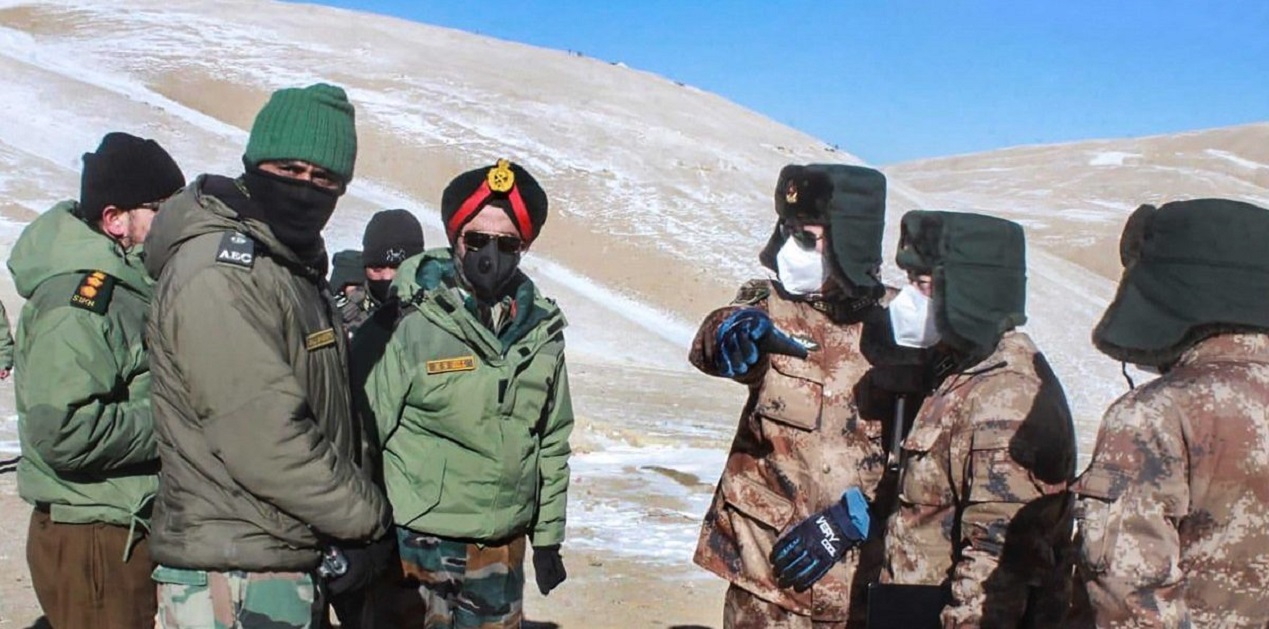The contradictions are stark. External Affairs Minister S Jaishankar has often opined that relations with China are not normal, because India will not agree to any attempt to change the Line of Actual Control (LAC) unilaterally. Stating again its oft repeated institutional position, Chinese Foreign Minister Qin Gang in the recent visit to New Delhi said that India and China should put the boundary issue in the “proper place” in bilateral relations and work together to bring the situation at their borders under normalised management.
This phrase of “normalised management and control” has not been explained. Four issues come to fore. One, it becomes apparent that China deems current situation to be “normal”. Two, to draw inferences, China has no plans or intention towards conflict resolution, and obviously there is clear indication that a de-escalation or de-induction is not on the cards. Three, it also implies that PLA’s huge presence and intensive military infrastructure creation aims at retaining geostrategic pressure and ‘threat in being.’ Four, having ‘normalised,’ for multiple reasons—some internal, some external—the Chinese government seeks to move ahead on bilateral relations. India is the fifth largest economy, a very large consumer market, steadily moving up the ladder assiduously on the path towards reaching her potential.
The Art and Science of Salami Slicing
Nobel laureate Thomas Schelling had coined the term ‘salami slicing’ to describe a strategy in military that oversteps boundaries and offers an attractive option for expansionist powers. The basic notion is to gain ground slice by slice rather than all at once. Salami slicing, rather than overt aggression, is China's preferred strategy in a well-planned and methodical manner to gain strategic advantage through steady progression of small actions. These over a period of time lead cumulatively to a strategic transformation in China’s favour.
Analysing China’s salami slicing strategy in South China Sea, it limited the options of the peripheral countries by baffling their plans, making it problematic for them to develop a response. There was an incremental expansion in its footprint and control in the South China Sea. In a May 2013 interview on Chinese television, Major General Zhang Zhaozhong of PLA had described this as “cabbage strategy.” This entailed surrounding a contested island with concentric layers of Chinese fishing boats, fishing administration ships, maritime enforcements ships, and warships such that “the island is thus wrapped layer by layer like a cabbage.”
Faits Accomplis follow Salami Slicing
Why salami slicing strategy? For expansionist China, it is attractive option to create fait accompli for the opponent and avoiding potential retaliation and escalation. Instead of pursuing decisive victory by a conventional war, the object is to absorb slice by slice, securing cumulative gains at minimal cost. Obviously salami slicing is at tactical level, though obtaining expansionist strategic objectives. Thus, a series of limited, repetitive salami slicings would create faits accomplis in local context appreciating and identifying areas that would avoid potential escalation. As Thomas Schelling had opined about salami slicing, “…intrusion on a scale too small to provoke a reaction, and increase it by imperceptible degrees, never quite presenting a sudden, dramatic challenge that would invoke the committed response.”
As a corollary, such salami slicings would create fait accompli that are impossible to undo without direct military confrontation. An attempt to reverse would become costlier than acceptance and that the resulting war would rest on the shoulders of adversary. It must be said that such salami tactics will be doomed to failure when they spark unanticipated costly retaliation, either on wrongful political assumptions or military misjudgement, on how much the adversary values the target and shows resolve.
In Eastern Ladakh, however, China took advantage of an atmosphere of Agreements, Protocols and CBMs to aggressively undertake many small salami slicings, together, attempting to create strategic advantage and gains, and make the situation, fait accompli for India. There were two major difference however. One, since the LAC had differing connotations for the two, and that registration of claims was based on domination by regular patrolling, salami slicing was denial of this domination by patrolling. And two, there was seemingly Chinese appreciation that Indian response (gleaned through previous responses in 2013, 2014 and 2017) to even one denial of patrolling rights would be fierce and immediate. The window of creating faits accomplis was narrow and risky. Hence many of these modified salami slicings were undertaken simultaneously! As events followed May 2020, this Chinese appreciation was correct, and Indian response was strong, firm and across the entire LAC, as events at Yangtse, Tawang in December 2022 proved.
Salami Slicing, Faits Accomplis Followed by Buffers
That brings to fore the conventional wisdom of creating buffers (moratorium on patrolling) as pushed in by the Chinese during Corps-Commander Level Talks in Chushul/Moldo. Buffers were important in maintaining peace and security, as against likelihood of clashes and jostling for space. In conflict mitigation function of buffer zones can be stated as an area of separation between belligerent forces to reduce the risk of renewed conflict.
Buffer zones mitigate conflict through at least four mechanisms. First, creating a buffer territory negates contiguity by generating physical distance, or at least decreasing the extent of the territory in which they are contiguous. Distance does make surprise attacks less likely by allowing the defending state time to organize. Second, buffers create challenging and unfavourable logistics for military action and military power projection. Thus, states will be less likely to initiate militarized conflict with their rivals if they are separated by a buffer territory. Third, the distance created by buffers favours defence. As it is mountainous geography favours defenders. Fourth, buffers reduce the security dilemma and the prospects of inadvertent wars.
What Next after Buffers?
The events of the last three years have portents for the future. Three issues are highlighted. First, the active buffer territories in Eastern Ladakh created over last two years, are through mutual acceptance between the two militaries to separate forces physically and prevent unintended clashes on the border. Will these buffers guarantee peace in the long term? Buffers are actually what China will make of them; in an era of distrust, these can have limited value in terms of duration. The desire to infringe will rise as time passes, the likelihood of tactical engagement will increase proportionally and create security dilemmas.
Second, are buffers the best solution to disputed borders? It can be argued that buffer zones are obsolete in 21st Century, owing to the advancement of ISR and geo-mapping technology. Borders need not follow linear or clearly identifiable features any more, they can be delineated and mapped to exactitude by modern technology. Third, buffers have been established in Aksai Chin only. There is additional nearly 3000km of border with China. If Yangste was a trend, then the attempts to salami slice further will continue, to create additional faits accomplis.
The omnipotent question is what India’s policy should be. Broadly, India’s border guarding forces must deny any opportunity for further salami slicing along the entire border. It is a major task, but in light of distrust, it is essential. In any case salami slicing leading to another fait accompli, must not be acceptable, even at the apprehension of escalation. In matters of sovereignty and territorial integrity, fear of escalation must not be the sole criterion.
There needs to be progress from only limited conflict prevention and mitigation to conflict resolution. It is apparent that military to military talks have proven to be advantageous. There ought to be Joint Military Commission between Western Theatre Command of PLA and the (proposed) Northern Theatre Command of India at a three-star level (say Chief of Staff) to continually work at conflict mitigation. There is need to examine that even if India and China do not agree on the border as yet, it must be agreed that there should be a clear line distinguishable delineating two countries, based upon geo-mapping. The buffer zones must not become etched in stone, and should be nullified, soonest.
In sum, China and India, despite the serious ‘abnormal’ border issues, have larger issues of engagement, like bilateral trade, G20, SCO, BRICS, climate change and the like. These are live issues that cannot be pushed to background. Constructive engagements can only occur when the rival states engage in cooperation to reach a formal or tacit agreement about the ‘rules of the game’ – in case of China and India which is the border issue.
(The paper is the author’s individual scholastic articulation. The author certifies that the article/paper is original in content, unpublished and it has not been submitted for publication/web upload elsewhere, and that the facts and figures quoted are duly referenced, as needed, and are believed to be correct). (The paper does not necessarily represent the organisational stance... More >>
Image Source: https://cdn.thewire.in/wp-content/uploads/2021/02/15093131/2021_2img11_Feb_2021_PTI02_11_2021_000367B-1200x600.jpg










Post new comment